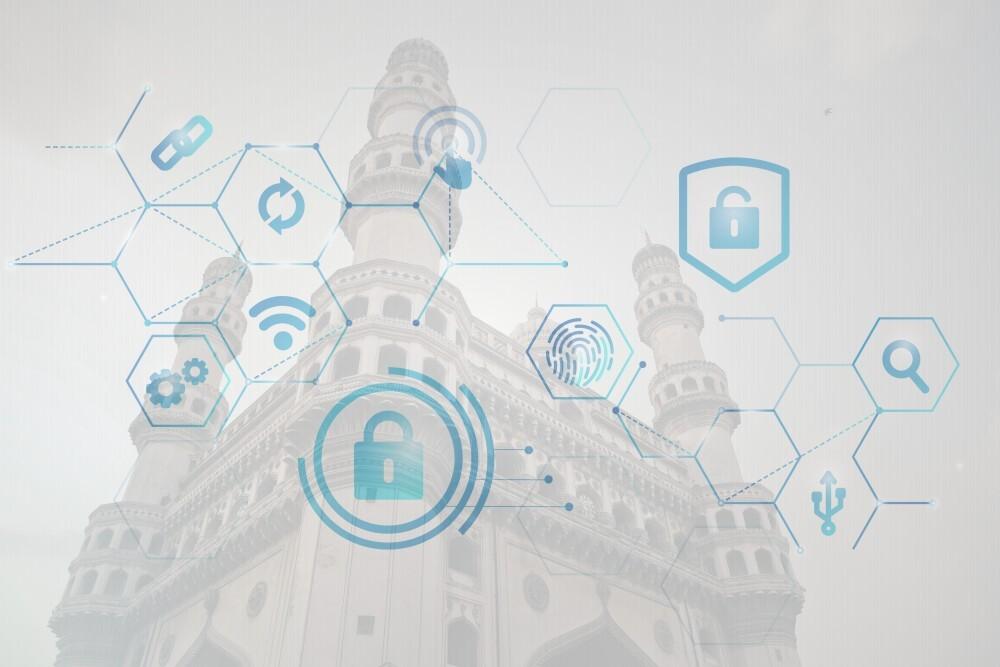
Imagine a village school losing access to its digital learning platform due to a cyberattack or a local business falling victim to online fraud. With India’s digital expansion, such threats are becoming a reality. According to the Digital Empowerment Foundation (DEF), more than 90% of Indians lack basic digital literacy, making them vulnerable to cybercrime.
Cybersecurity is the practice of protecting systems, networks, and data from cyber threats aiming to steal identities, commit financial fraud, or disrupt operations. With over 95% of villages now digitally connected, rural communities have immense opportunities for growth. However, ensuring secure digital access is just as crucial.
In this blog, we’ll explore the importance of cybersecurity in villages, common cyber threats, and practical ways to build digital resilience in rural India.
The Growing Digital Presence in Villages
Villages in India are no longer digitally isolated. With extensive growth in digital expansion and technology, rural areas are bridging the digital divide and embracing new opportunities. Here’s how this transformation is unfolding:
Internet Access Expansion: Government initiatives like Project BharatNet aim to bring broadband services to every Gram Panchayat. As of August 2024, 2.13 lakh out of 2.22 lakh Gram Panchayats have been connected, enabling faster internet access in rural India.
Digital Services Adoption: With increasing connectivity, rural communities are actively adopting online banking, e-commerce, and digital education. Villagers can now access government schemes, conduct cashless transactions, and purchase essential goods online, improving their quality of life and financial inclusion.
Smart Agriculture: Technology is revolutionizing farming practices. Drones, smart sensors, and precision farming tools are helping farmers optimize crop yield, reduce costs, and minimize environmental impact. Initiatives like ITC’s Climate Smart Agriculture, benefiting over 7.4 lakh farmers across 23 lakh acres in 17 states, showcase how digital tools are transforming India’s agricultural sector.
As villages embrace digitalization, cybersecurity becomes a critical need to protect their data, financial transactions, and online activities.
Why Cybersecurity in Villages Matters
Protecting Personal Information: As rural communities embrace digital services, securing personal and financial data is crucial. Cybersecurity measures help prevent identity theft, fraud, and unauthorized access to sensitive information.
Securing Local Businesses: Small businesses, including local shops and farmers using digital payment systems, need strong cybersecurity to protect their earnings and customer data. Securing their networks ensures business continuity and prevents financial losses due to cyber threats.
Preventing Cyberattacks: Villages are increasingly targeted by malware, phishing scams, and ransomware due to low cybersecurity awareness. Implementing protective measures can reduce these risks and safeguard digital assets.
Maintaining Trust in Digital Services: Ensuring secure online experiences encourages villagers to confidently use digital banking, e-commerce, and government services.
By prioritizing cybersecurity, villages can minimize digital risks, protect livelihoods, and create a safer online ecosystem for their growing digital presence.
Unique Challenges in Implementing Cybersecurity in Villages
Limited Awareness and Education: Many rural communities lack basic knowledge about cyber threats, their impact, and how to stay protected. Without proper awareness, villagers are more vulnerable to scams, identity theft, and online fraud.
Resource Constraints: Limited access to cybersecurity tools and IT support makes it difficult for villagers to implement strong security measures. Many businesses and individuals rely on outdated software, increasing their exposure to cyber risks.
Cultural Barriers: Resistance to new technologies and security practices is common in rural areas. Traditional mindsets, skepticism about digital security, and reliance on informal financial transactions make it challenging to introduce cybersecurity best practices.
Addressing these challenges requires targeted awareness campaigns, affordable cybersecurity solutions, and localized training programs to ensure villages can safely participate in the digital economy.
Practical Cybersecurity Solutions for Villages
Strengthening the digital presence of villages requires accessible and effective cybersecurity solutions. Here’s how rural communities can enhance their cyber resilience:
Education & Awareness Programs: Cybersecurity training and awareness campaigns are essential to bridge the knowledge gap. We, at Cybersecurity Center of Excellence (CCoE) organize training sessions and workshops to educate rural communities about cyber threats and safe online practices. One of our recent trainings on Cybersecurity and Career Prospects for Women at the Trinity College of Engineering & Technology, Karimnagar and Peddapalli, gave an insight on the evolving cybersecurity landscape, career pathways, and the critical role of digital security.
Affordable Security Tools: Free or low-cost antivirus software, firewalls, and secure browsing tools can help villages protect their devices from cyber threats. Initiatives promoting these tools ensure that security isn’t limited by financial constraints.
Government & NGO Support: Programs like Cyber Sarpanch train village representatives to handle cyber issues and spread awareness. NGOs play a crucial role by structuring training programs, identifying key individuals, and providing volunteer support to extend cybersecurity education.
Secure Internet Practices: Encouraging villagers to adopt strong passwords, recognize online scams, and avoid sharing sensitive information ensures safer digital participation. Regular community-driven workshops can reinforce these habits and empower rural users to navigate the internet securely.
By implementing these strategies, villages can build a safer digital ecosystem and unlock the full potential of online connectivity.
The Future of Cybersecurity in Rural Areas
Cybersecurity is a constantly evolving field, and rural areas must keep pace with emerging threats and solutions.
Emerging Technologies: AI and IoT are playing a significant role in strengthening cybersecurity by detecting threats in real-time and automating security measures. As villages continue their digital expansion, integrating these technologies will help safeguard local businesses, personal data, and online services from cyber risks.
Ongoing Education and Adaptation: Continuous learning, awareness programs, and skill development are crucial to protecting villages from new and evolving threats. Encouraging digital literacy and cybersecurity training will ensure rural communities stay resilient in an increasingly connected world.
How Can CCoE Help Improve Cybersecurity in Your Village
CCoE offers several initiatives to strengthen cybersecurity awareness and skills in rural communities.
The Indo-Dutch Cyber Security School (IDCSS) is an annual program that connects students and young professionals from India and the Netherlands with industry experts. It provides academic and professional training in cybersecurity, helping participants build essential skills for the evolving digital landscape.
The Great AppSec Hackathon, part of the App Security Champion virtual program, is a nationwide cybersecurity competition that enhances students' problem-solving and innovation skills through a gamified learning approach. The CCoE team has also conducted free training on Application Security and CTF Hackathons across various colleges.
Additionally, CCoE provides courses, workshops, and training sessions focused on cybersecurity best practices, ensuring that rural communities can protect their digital presence effectively.
Conclusion
As villages across India embrace digital transformation, cybersecurity is essential to protect personal data, local businesses, and online services. Internet expansion and smart agriculture to government initiatives and community-driven digital awareness programs, rural areas have enhanced digital connectivity, but are also vulnerable to cyber threats.





